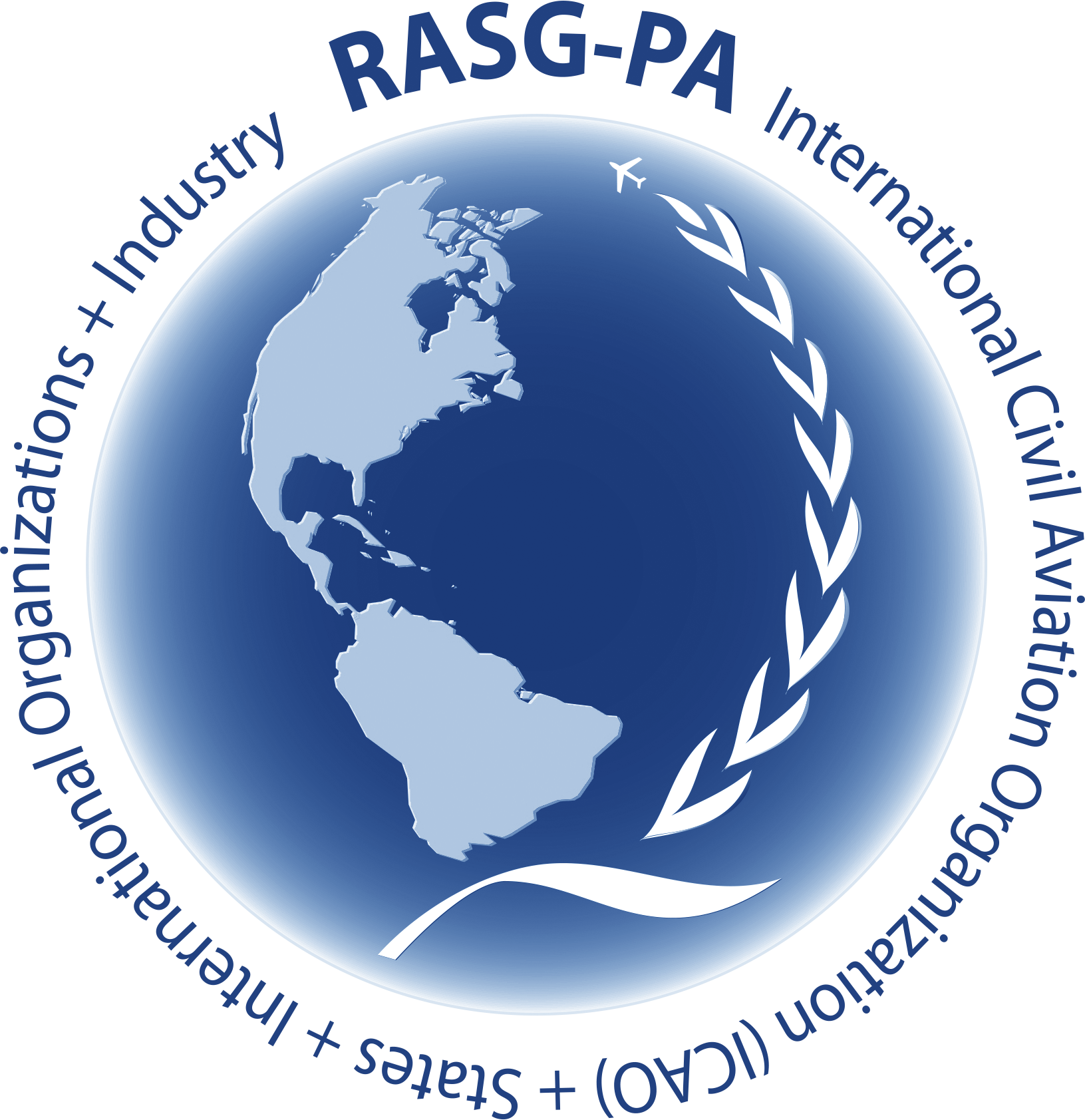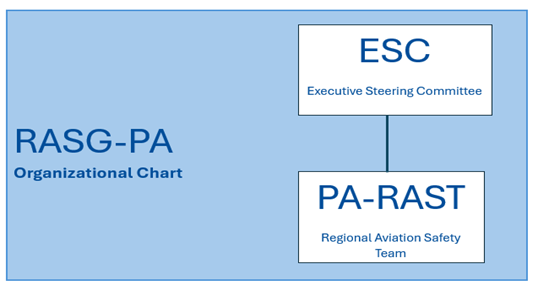Background

The Regional Aviation Safety Group – Pan America (RASG-PA) was established in November 2008 to use the framework provided by the ICAO Global Aviation Safety Plan (GASP) and the Global Aviation Safety Roadmap (GASR) to support the establishment and operation of a performance based aviation safety system in the Pan American Region.
RASG-PA supports implementation of the ICAO GASP and complies with ICAO Council approval of Regional Aviation Safety Groups (RASGs) with the objective to address global aviation safety matters from a regional perspective. Further, the RASG-PA supports the NACC and SAM Regions in establishing objectives, priorities, indicators and the setting of measurable targets to address safety-related deficiencies in each region while ensuring consistency of action and coordination of efforts.
RASG-PA serves as regional cooperative for integrating global, regional, national, and industry efforts in continuing to enhance aviation safety in the Region. RASG-PA eliminates duplication of effort through the establishment of cooperative regional safety initiatives and activities. This coordinated approach significantly reduces both financial and human resource burdens on States and allows for the delivery of measurable safety improvements.
Vision
The RASG-PA vision is to remain ahead of any risks to commercial aviation, and to collaborate towards achieving the highest level of safety in the Pan American Region.
Mission
The RASG-PA mission is to reduce fatality risk in commercial aviation by ensuring prioritization, coordination and implementation of data-driven safety enhancement initiatives in the Pan American Region through the active involvement of all civil aviation stakeholders.
RASG-PA Objectives
The RASG-PA hast two objectives:
- to develop an integrated, data-driven strategy and implement a work programme that supports a regional performance framework for the management of safety risk, to reduce the commercial aviation fatality risk in the Pan American Region and promote States and industry safety initiatives; and
Note: Regional data may point to different areas of focus than the GASP/GASR.
- to support, monitor and report implementation by States of the Global Aviation Safety Plan (GASP, Doc 10004) considering the Regional Aviation Safety Plans, and by fostering cooperation between all States and stakeholders.
RASG-PA Membership and Organization
The following are considered as RASG-PA members:
- All ICAO Contracting States, and Territories recognized by ICAO, within the area of accreditation of the ICAO NACC and SAM Region;
- International and regional aviation organizations, airline operators, maintenance and repair organizations, aircraft manufactures, airport and air navigation service providers, international organizations/representatives for pilots and aviation professionals present in the region; and
- Regional organizations, including Regional Safety Oversight Organizations (RSOO’s), Cooperative Development of Operational Safety and Continuing Airworthiness Programmes (COSCAPs), and Regional Accident and Incident Investigation Organization (RAIO) within the area of accreditation of the NACC/SAM Region.
Structure and Organization
In order to accomplish its mandate, RASG-PA established the following organization:
- Executive Steering Committee (ESC); and
- Pan America — Regional Aviation Safety Team (PA-RAST)

RASG-PA Chairmanship
RASG-PA Chairmanship is composed of two Co-Chairpersons:
- One from ESC member States/Territories; and
- One from ESC member International Organizations/Industry.
Currently, the Co-Chairpersons are:
Andrew Larsen (CANADA) – Co-Chairperson representing the States; and
Javier Vanegas (CANSO) – Co-Chairperson representing the Industry and International organizations.
and the Vice-Co-Chairperson is:
Gerardo Hueto (IATA) - Vice-Co-Chairperson representing the Industry and International organizations.
Executive Steering Committee
The Executive Steering Committee is currently made up of the following members:
| Aruba | Airbus |
| Brazil | ALTA |
| Canada | ATR |
| Chile | BOEING |
| Colombia | CANSO |
| Costa Rica | EMBRAER |
| Dominican Republic | IATA |
| Panama | IFALPA |
| United States | |
| Uruguay |
For additional information, please contact: RASG-PA [at] icao.int (RASG-PA[at]icao[dot]int)